
In recent years, Museum of Photographic Art’s (MOPA) annual international trip has become a yearly tradition we have really enjoyed. A few years back, the Collectors’ Salon members were polled as to their preferences for future trips: Mexico came in first and so we went to Mexico City (https://aperturephotoarts.com/mexico-city-mania/) and San Miguel de Allende (https://aperturephotoarts.com/san-miguel-de-allende-dia-de-los-muertos-2013/) last year, while London was second and incorporated into this year’s trip. The final choice was Japan, which I hope means that next year’s trip will be there (hint, hint, MOPA organizers!). Previous trips have been to Paris and Amsterdam.
The plan for this year was for an extended week divided between London first, then to Paris, coinciding with Paris Photo, the photo world’s biggest annual event. We decided to take 2 full weeks off and head to London early to explore it in more depth, this being only our 3rd stay in the British capitol (the last, our first together, 3 years ago, and before that, nearly 30 years before, as the first stop on each of our first European “Grand Tour” trips).
We almost always have something eventful happen while preparing for a trip, and this trip was no exception. Both of these events took place in the wee hours of the morning, 5 am to be precise, on the 2 consecutive mornings leading up to our Saturday evening departure on British Airway’s daily non-stop to London.
One of these 5 am events was voluntary, the other decidedly inadvertent. In the weeks leading up to our departure, I began trolling the London theatre sites, trying to decide whether to book theatre tickets in advance or take our chances on half-off, same night tickets at Leicester Square. I found Time Out’s review of David Byrne’s musical about Imelda Marcos, Here Lies Love, so intriguing that I really wanted to see it. Unfortunately by the time I read this, it was sold out, except for 20 pound dance floor seats to be released every Friday at noon for the following week. .
Noon in London is 5 am in California, hence my wee hour rendezvous with the phone, trying to get through to the National Theatre. Unfortunately, I kept getting the “all operators are currently occupied” message and didn’t actually connect until 5:08 am. Which was too late, at least for Here Lies Love tickets. As long as I had gone to the trouble of getting up early, I inquired about tickets for other show, leading me to booking us for Warhorse and The Curious Incident of the Dog in the Night Time, as well as the first night of previews of Behind the Beautiful Forevers. Something new for us, to go to a preview, but I loved this book, one of my book club’s selections. Since it is non-fiction and tells the story of impoverished residents of a slum on the outskirts of Mumbai, India, it was hard to imagine it as a theatrical production. Which made it that much more enticing. The tickets had been completely sold out when I had checked before, so at least something good came out of giving up an hour’s sleep.
Later the same day, at work, I received this email, which was so politely worded, I didn’t mind at all having to call Nicholas back.
“With apologies
Just after we had finished speaking, which was delightful, and thank you for being so lovely at such an inhumane hour, my compughtor (sp) crashed, and I’m afraid you order was lost
However I have reassembled you order from my fallible memory
And reinstated the following”
On Saturday morning, the day of our departure, we took our time getting up, dallying until nearly 9:30 am, in anticipation of a tiring traveling day. Passing the desk where my phone was charging, I was horrified to find a text from Howard, who drives us to the airport, saying he was outside. The time of this text: 5:20 am. Instantly, I knew what had happened. A few days before, I texted Howard to confirm that he was picking us up on Saturday, and he texted back.
“Yes, 5:15 am pick up at your house?”
I neglected to notice he had highlighted the a.m. part in color.
The flight itself was uneventful. In BA’s World Traveler Plus section, the seats are much more comfortable than in economy, and ALMOST comfortable enough to sleep. However, they are a mile away from fully reclining, and we both had a restless night of near-sleep. The 10 hour flight seemed longer than usual. I watched a French film with the versatile Marion Cotillard, Deux Jours, Une Nuit, but found the depressive character borderline tiresome. George Clooney’s The Monuments Men was more engaging, based on the true story of a U.S. Army Unit in WW II charged with locating hidden stores of antiquities and artwork stolen by the German Reich.
All was smooth transferring to our home base for the week, a lovely, art-filled 1 bedroom apartment with a spare black and white esthetic near the Harvey Nichols department store, loaned to us by our friend Greg’s family. We stayed here 3 years ago and loved the location, especially the proximity to a branch of Ottolenghi, a gourmet emporium with fabulous baked goods and enticing Meditterrean spiced salads.
The one wrinkle in settling in was internet access. We needed an Ethernet connection, so factoring in a stop at an Apple store became necessary. After breakfasting on Ottolenghi goods, our first stop was at the neighborhood Starbucks, not so much for the coffee as for the reliable wireless internet, so we could figure out where the Apple store and other destinations were. Not surprising, there are 3 Apple stores within 2 miles of this upscale neighborhood. We picked the closest, on Regent Street northeast of us, and scoped out other destinations on the way and beyond.
Using our 7 day unlimited Oyster pass, we jumped on the Tube for a couple of stops to Greenpark, then walked north, with a branch of the Gagosian Gallery and Sotheby’s in mind as possible destinations. Our walk took us past Berkeley Square, a lovely park with the oldest (200 years!) plane trees in London, and a burst of surprisingly familiar fall color, in the form of Dale Chihuly’s Sun, exhibited at Salk Institute a few years ago.
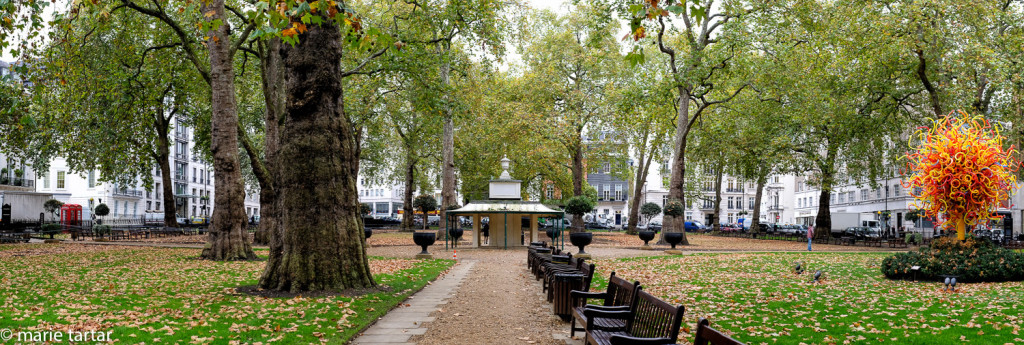
Berkeley Square in Mayfair, London: the Chihuly on the right seemed unusually familiar; indeed, it was previously displayed at the Salk Institute
Gagosian Gallery proved to be their small outpost, with just one monumental painting by Richard Serra filling a large gallery. At the north end of Berkeley Square was Phillips Auction House, with an exhibition of photographic works on metal by Andrew Levitas, a curious mix of African safari animals and more macabre imagery, as well as sculptural works created with the same technique of photographic images fused to aluminum. This definitely prompted the sort of inquiry poised directly by the next gallery we popped into, the Fine Art Society, the oldest commercial gallery in the UK, since 1876. The group show, titled What Marcel Duchamp Taught Me, invited artists to respond to Duchamp’s pervasive influence, from the readymade (this being the centenary of Duchamp’s paradigm shifting first “pure” readymade, Bottle Rack) and the implication that art is whatever an artist declares it to be. From the first readymades, the stepping stone to conceptual art was laid.
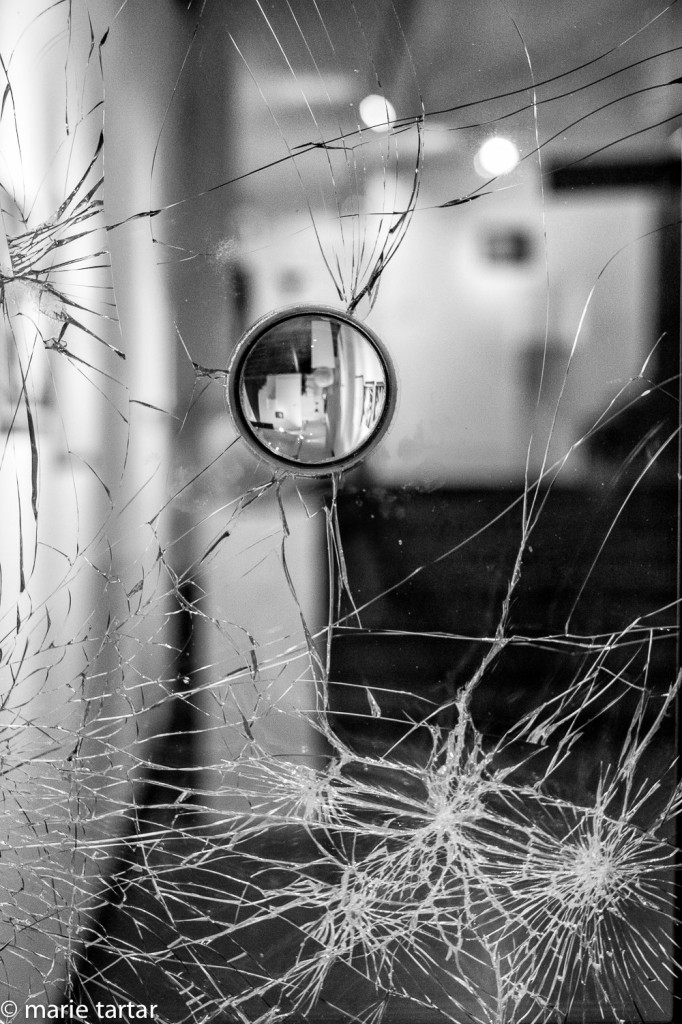
Cracked glass work Too Close for Comfort by Kendell Geers (2009) in What Duchamp Taught Me recalls his seminal work, The Bride Stripped Bare by her Bachelors, Even
The show featured 50 artists, with work spread over 5 floors, including a 5th floor room once occupied by Whistler himself. This gallery was filled with a puzzling assemblage juxtaposing Whistler and his ancestors and descendants with those of Jane Fonda, a curious mix. This gallery and its connection with Whistler are interesting for another reason. This was apparently where Whistler invented the now de rigueur solo exhibition, hanging his works evenly spaced on pale yellow walls, a break from the salon style multilayer hanging traditions of the Royal Academy, effectively creating the template for how contemporary art has been displayed since.
The Apple store on Regent Street was a buzz of activity. I did manage to learn that my Iphone 5 was eligible for a free battery change, but that they were out of batteries. We did manage to secure the Ethernet cable that drove us there.
Backtracking to Sotheby’s, we made the mistake of veering into Zegna next door, where Steve proceeded to empty the family coffers under the pretext of spiffing up his wardrobe. It was dusk when we emerged from Zegna and too late for Sotheby’s, so we navigated by foot and Tube east to meet Anne and Mel, a couple from south London, with whom we’re planning a future exchange (Sedona for their apartment in Sitges, outside Barcelona). Anne and I had begun a correspondence by email in the months before our arrival in London, and is a retired police officer. Mel is planning an early retirement next year from her job in international advertising. The restaurant is a favorite of theirs, Moro, Moorish/ Spanish tapas influenced, very convivial and delicious. Arriving about ½ hour early, we relaxed across the street at Gail’s Bakery. As we packed up to go to the restaurant, Gail’s was closing up shop, and asked if we would like a bread-free! We paired the delicious sunflower bread the next morning with cheddar from Waitrose.
We both slept badly Monday night, so it was hard to get going as early Tuesday morning. I had entertained notions of being at the Tower of London at 9 am for the opening. It wasn’t clear whether the Tower’s hours were actually relevant to the main attraction, the sea of red poppies being installed over recent months by artist Paul Cummins and stage designer Tom Piper. The Tube was warning of large crowds at Tower Hill Station and suggesting alternates, but didn’t seem excessively crowded at 10 am. Many of the riders were wearing poppy pins and corsages, commemorating the approaching 100th anniversary of Armistice Day, on November 11. Stepping out of the Tube was another story, with huge crowds, busloads being disgorged, although very orderly. The British do queue very well.
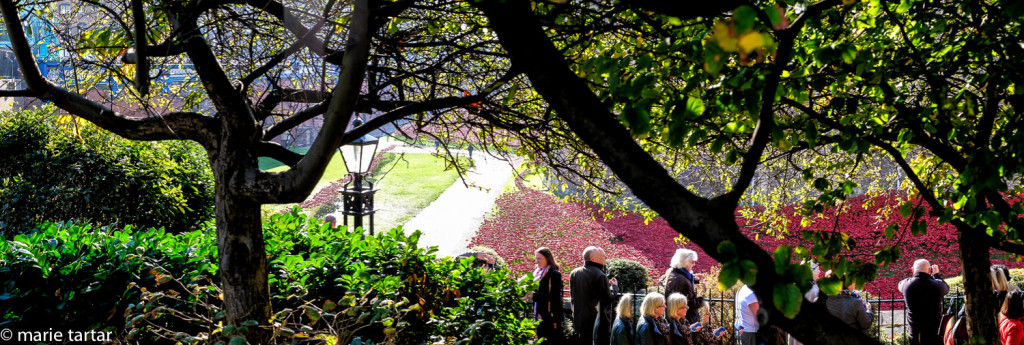
Huge crowds thronged to see Blood Swept Lands and Seas of Red, commemorating the 100 year anniversary of the start of WW I
The number of people was astounding, seemingly one visitor for each of the 888,246 poppies in the work. The installation has been in progress for months, with each poppy representing a fallen British Empire soldier from WW I. We had arrived during the final week, with the final poppies planned to be in place by Armistice Day, November 11, the following week. The poppies had been sold to individuals to raise money for charity and sold out weeks before our arrival.
It was also a beautiful cool sunny day, which may have contributed to the hoards of people. It was a sobering, staggeringly vast, very moving installation. It did have its occasional comic moments, seeing grown people trying to hoist themselves up onto the bridge, trying to see better.
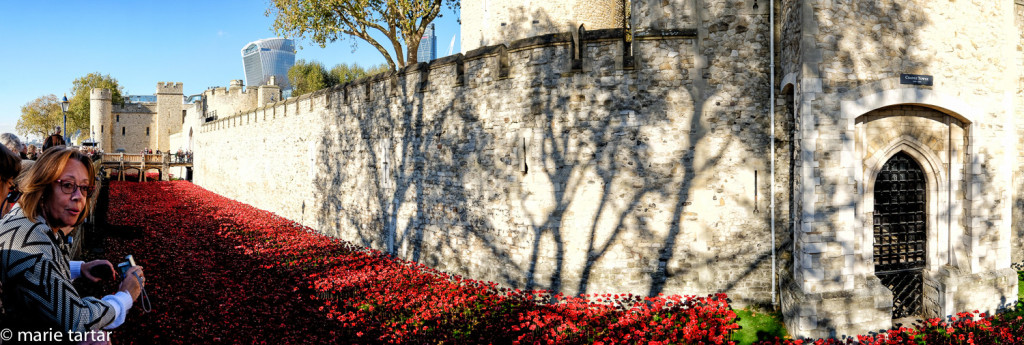
The British public’s response to this work was unprecedented, prompting calls by politicians to extend it past the planned Armistice Day dismantling, to give those who hadn’t had an opportunity to pay their respects a few more days.
We took a break at lunch, coming back to the flat and heading to a Gordon Ramsey restaurant nearby, Pétrus, which had a 37.5 pound 3 course lunch special (really 5 courses, with the best amuse bouche ever and a supplemental dessert).
We were both tired enough from the night and nervous enough about being awake for the evening’s theatre outing, that we didn’t dare have wine with lunch. Dommage! The room is art deco, elegant, subdued and quiet enough to hear without straining, an increasingly rare dining experience today.
We made it to the Courtauld Institute for an hour before they closed at 6 pm, which was just long enough to get reacquainted with the Manets (Bar at the Follies-Bergère), Degas, Cezannes and other favorites there.
War Horse, the World War I drama, was the final entry in the day’s dance card and what a finale it was, with incredible puppetry, minimalist props (actors holding poles to form fences), video projections onto a swooping swath of screen, very emotional and moving. We were astonished at how spot on the puppeters were able to mimic a horse’s movements and even respiration, with remarkably lifelike fidelity.
Wednesday, November 5, 2014
We walked south to Sloan Square intending to visit Saatchi Gallery, only to find it closed for the rest of our stay. While checking out the shopping street, King’s Road, we headed into Muji and ended up making just enough purchases to eek over the tax rebate threshold of 50 pounds.
By this time, it was afternoon and time to head to Tate Modern. East on the District line, we disembarked at Blackfriars, wanting to walk over Millenium Bridge to reach the former power plant turned contemporary art museum. There were 3 hours to closing, enough time to see the Sigmar Polke show. He is an interesting, difficult to categorize artist. Appropriately, the last time we were at the Tate Modern 3 years ago, the major fall show was Gerhard Richter, his countryman and artistic compatriot. I liked a few pieces very much, including a bubblewrap painting from his Watchtowers series, but overall find his work more intellectually interesting than visually captivating.
On the heels of seeing the sea of poppies at the Tower and being transported into the throes of battle via Warhorse, I realized how just how much war and its attendant casualties were on my mind, when I completely visually misinterpreted a work by Joseph Beuys, another German artist I find difficult to appreciate. What I took to be scattered limbs on a battlefield actually represented emerging lifeforms on the ground, a considerably more cheery interpretation, at least per the information on the wall.
We stopped at nearby Founders Arms (recommended by Kiri, daughter of one of our administrators, who now lives in London) intending to have a quick bite before our 7:30 curtain at the Gielgud Theatre for The Curious Incident of the Dog in the Night Time. It was packed and obviously popular, and no tables were to be had. It was just as well, because once we crossed the river and turned our attention to actually getting to the theatre, we realized it was located in a Tube “hole,” requiring multiple transfers and we probably would be able to walk it just as fast. We made it just in time, barely enough time for a bathroom break, closer than we like to cut it. It was, in a word, a fantastic production, theatre at its finest.
I first heard about the book by the same name years back through another MOPA devotee, Stefana. Her description of the autistic teenage protagonist prompted me to see the filmed version of the London production when it played in Sedona earlier in the year. I was blown away by the story and presentation and wondered how watching a filmed version would compare to being in the audience. The answer is, both were terrific, and worthwhile viewing. The set is remarkable, almost a character in itself, a giant lighted floor grid. Depending on which portions are lit, it stood in for separate rooms, subway maps and other grids, and at other times, lit erratically and frantically, it communicated effectively the information overload with which the protagonist struggles. The film version had the advantage of bird-eye views no one attending in person could actually have, although we definitely had the flavor of it from our balcony seats.
Thursday, November 6, 2014
We had to search a bit to find Notre Dame de France, which is just off the north end of Leicester Square, in the heart of Soho. Our objective was another link on the trail of Jean Cocteau (https://aperturephotoarts.com/south-france-summer/), another of his decorated chapels, this one painted over a week in November 1959. The small Catholic church is an oasis of quiet in a boisterous part of town. As we entered, there were a dozen or so people scattered in the pews. I assumed they were reflecting or privately praying and so was surprised when the priest began speaking just after we found the small chapel, halfway up on the left, behind glass. Evidently, this disparate group was in the midst of a mass, and had been in prayer when we entered. There was a bench just in front of the chapel, so we sat down as quietly as possible. Cocteau was invited by the Ambassador of France in London to decorate the chapel in 1956 when he was in London to receive an honorary degree from Oxford. He wasn’t able to come to London until after completing his film Le Testament d’Orphée. He was famous enough that he had to be shielded from view of journalists while painting the murals. This is the only one of his works like this to be found outside of France, and was restored in 2012. This chapel devoted to the Virgin contains 3 scenes, l’Annonciation (left), la Crucifixion (center) and l’Assomption (right). Cocteau worked himself into the Crucifixion scene, as seen here:
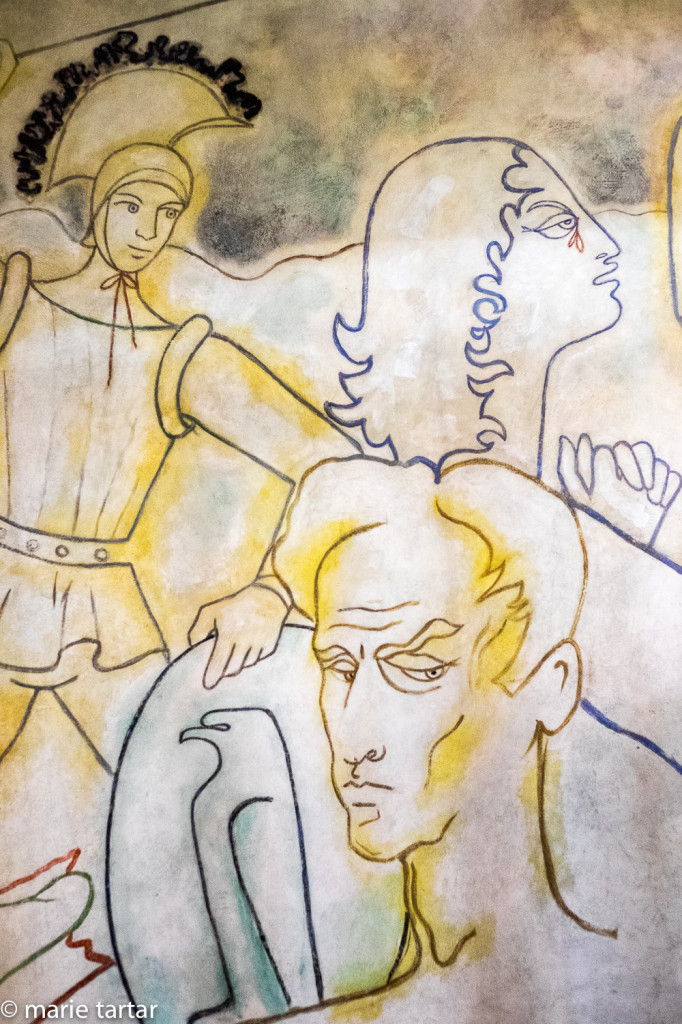
Jean Cocteau decorated chapel in Notre Dame de France church off Leicester Square in London: Cocteau painted himself into this crucifixion scene (bottom right)
From there, it was back onto the Tube to St.Paul’s Cathedral. I hadn’t planned to revisit the cathedral this time, but was prompted by being drawn into a Bill Viola video work, Tiny People, at the Tate Modern the prior day. The commentary mentioned this work was being shown in conjunction with his video installation “Martyrs,” at St. Paul. This combination sounded so intriguing, we had to go. I never realized St. Paul’s has had a series of contemporary art installations over the years, including by Yoko Ono, Rebecca Horn and Antony Gormley.
The Bill Viola piece was mesmerizing: 4 adjacent video screens, each showing an individual being martyred by one of the elements: earth, wind, fire or water. It is the first video work to be permanently installed in a British cathedral.
We did plenty of exercise, climbing up to the Whisper Gallery and then on…and on…up to the Golden Gallery (85 meters, 528 steps!). It was windy up there, but the panoramic views of London were resplendent.
Finally, it was back to the Tate Modern, to see some of the permanent collection we never made it to the prior day. A giant suspended textile work of Richard Tuttle anchored the great Turbine Hall with a dazzlingly colorful gesture; in his words, color is a “complete inexhaustible subject.”
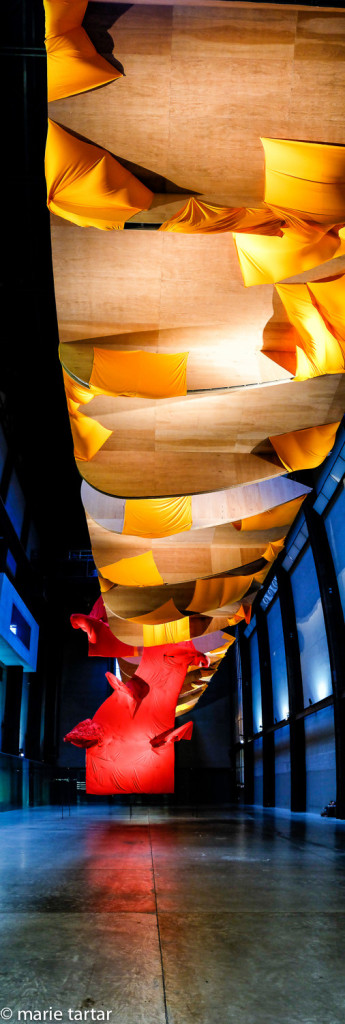
Sail-like construction by Richard Tuttle in the Turbine Hall at Tate Modern entitled I Don’t Know. The Weave of Textile Language
We had dinner near home at Amaya, a beautiful and upmarket Indian restaurant we enjoyed the last time. We had booked a few days earlier and at the time, only the shared table was available. In the meantime, there had been a cancellation and we were led to “our” table, the same we had 3 years before. We ordered a series of small plates, so many we brought enough home for dinner the following night (crispy noodle salad, edamame rolls with mango chutney, brussel sprouts with chestnuts and pinenuts-yum! We never made it to the biryani or dahl).
Friday, November 6
Left to our own devices, we don’t make it out particularly early, unless we have been foolhardy enough to fix an early appointment or jetlag has something to say about it. But once we get going, we tend to make up for this with our ability to go, go, go, until forcibly ejected from the gallery/museum/store in which we end the day. Today was no exception. After arising leisurely and having tea and breakfast à la Ottolenghi at home (a savory, nearly guilt-free version of a Danish, with a pastry base, topped with sweet potato and feta), we were off east on the Piccadilly line 2 stops to Green Park, alighting with our sights on the Royal Academy of Art.
This was a new art venue for us, but a venerable and longstanding institution to which we had never been. Anselm Kiefer was the driving reason, completing for us surveys of the careers of important contemporary German artists over 2 stays in London, including the Gerhard Richter show at Tate Modern in 2011 and Sigmar Polke at Tate Modern a few days ago. We both really admire his densely layered and metaphorical works, so looked forward to seeing a more comprehensive survey of his oeuvre. I really liked the scale of galleries, and the proportions of the works to the classical setting. Several large works were created for this show. One of my favorite pieces in the show, a huge, densely textured work, with a crackled base and a large sunflower affixed to it, seemed strangely familiar. And indeed, it proved to be Aschenblume, 1983-97, on loan from a hometown museum, the Modern Art Museum of Fort Worth (a brilliant Tadao Ando design). This is one of several works reworking the architecture of the Third Reich, here the Mosaic Room in the Reich Chancellery, Berlin, designed by Albert Speer.
The magnificent sculpture which opened the show, stacks of large lead books, with bird’s wings jutting out, looked fantastic in the traditionally proportioned setting.
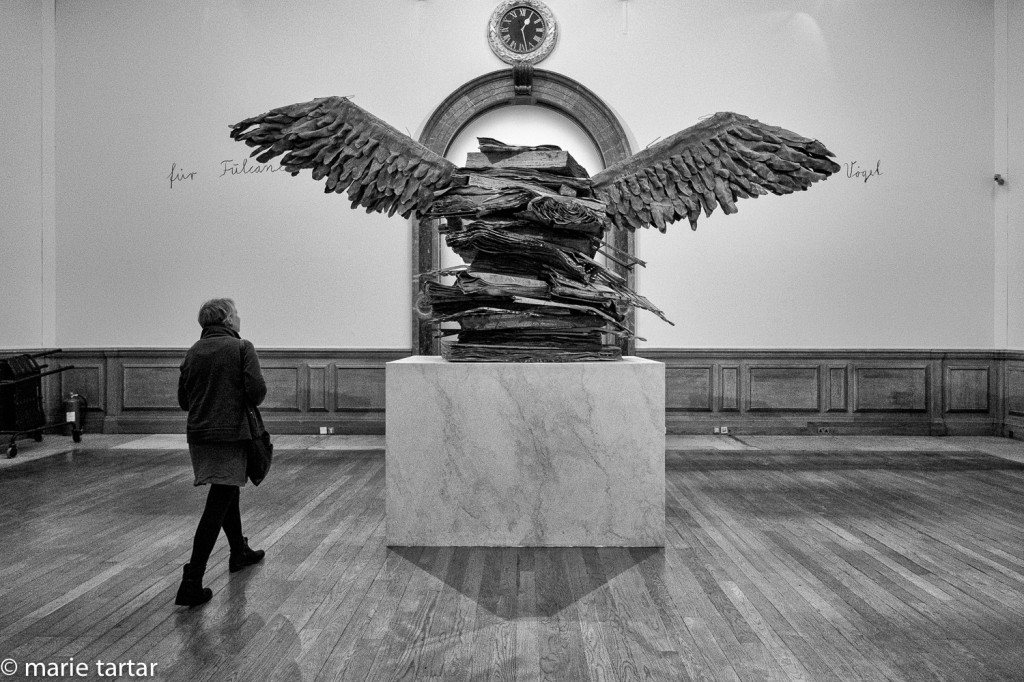
Giant books made of lead, a material favored by Kiefer due to its metaphorical weight, carry the weight of the world’s knowledge and history
We took a little break in the attractive dining room, sharing a fish pie and orange polenta cake, before shoving off in search of White Cube Gallery, just south of Picadilly. It is a sleek grey contemporary building, concealed in a traditional courtyard. The featured artist was new to us, David Hammonds, an African American artist, whose prices made us surprised we had never heard of him (the least expensive piece was 1+ something million dollars), a traditional African antelope sculpture painted traffic cone orange.
We had 5 minutes before the 4:30 closure to speed through nearby Christies to ascertain that we didn’t covet any of the paintings on offer and couldn’t afford the Barbara Hepworth sculptures we did like. So, no dilemma.

Regent Street, one of the first planned developments of London, is one of several architecturally unified designs of John Nash, dating to 1811
Then, it was north on Regent Street, lit up for Christmas, to the Photographer’s Gallery, which we learned about recently from Lyn Winter, seated next to us at the Nakashima table of honor at the opening dinner for 3 on the Edge, the new Mingei show spotlighting the work of 3 notable San Diego architects, James Hubbell, Kendrick Bangs Kellogg and Wallace Cunningham. We live in a Wally house and have done several remodeling projects with him, so it was a nice opportunity to catch up. From Lyn, we learned about her aunt, who had exhibited at Photographer’s Gallery.
On the way back, we checked out London’s own Liberty department store, which my sister had told me about prior to our 2011 trip but never got to.

Wonderful wooden staircase in Liberty, one of London’s historic department stores, off Regent Street
Enough for Part 1 of this travel post! We had a wonderful time in London, a dynamic metropolis, with an exceptionally polite populace, fueled by delicious and at times, astonishingly expensive food. Interestingly, theatre tickets are reasonably priced, especially using a New York yardstick. Coming up (eventually), wonderful artist studio visits and meals in London with MOPA in Part 2 and Paris in Part 3-stay tuned!
-Marie
To see more of our images, click here
Petrus
1 Kinnerton St
www.gordonramsay.com/petrus
02075921609
Moro
34/36 Exmouth Market
London ECIR 49E
(020) 7833 8336
www.moro.co.uk



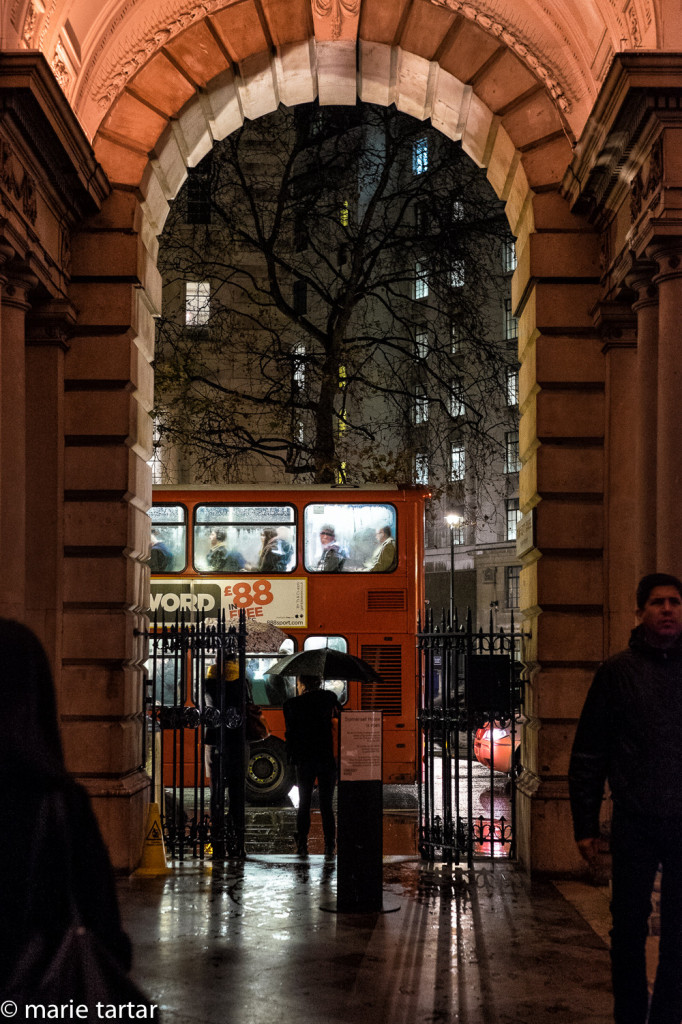
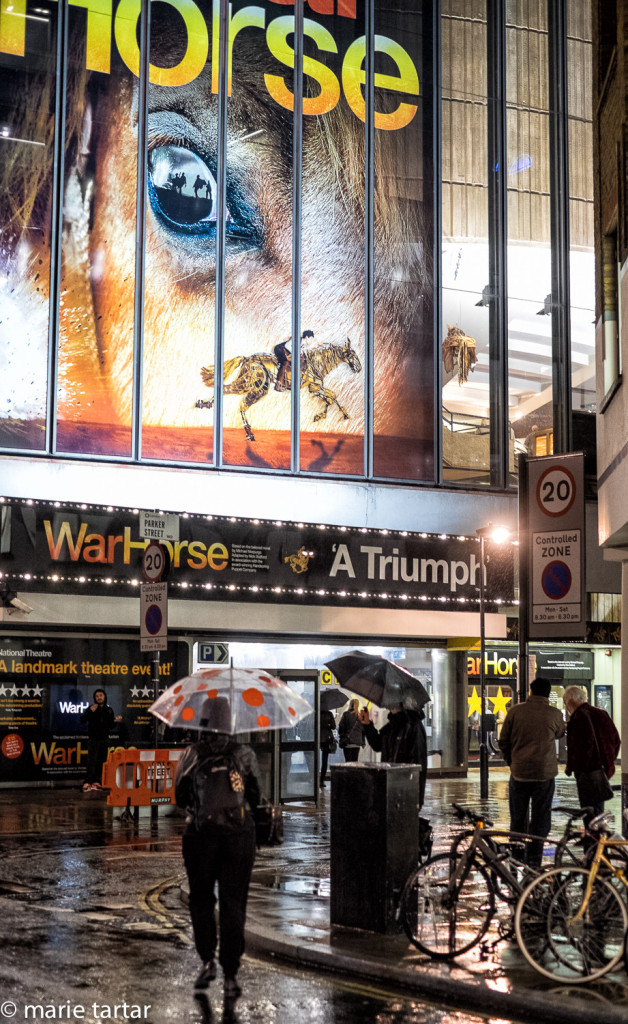
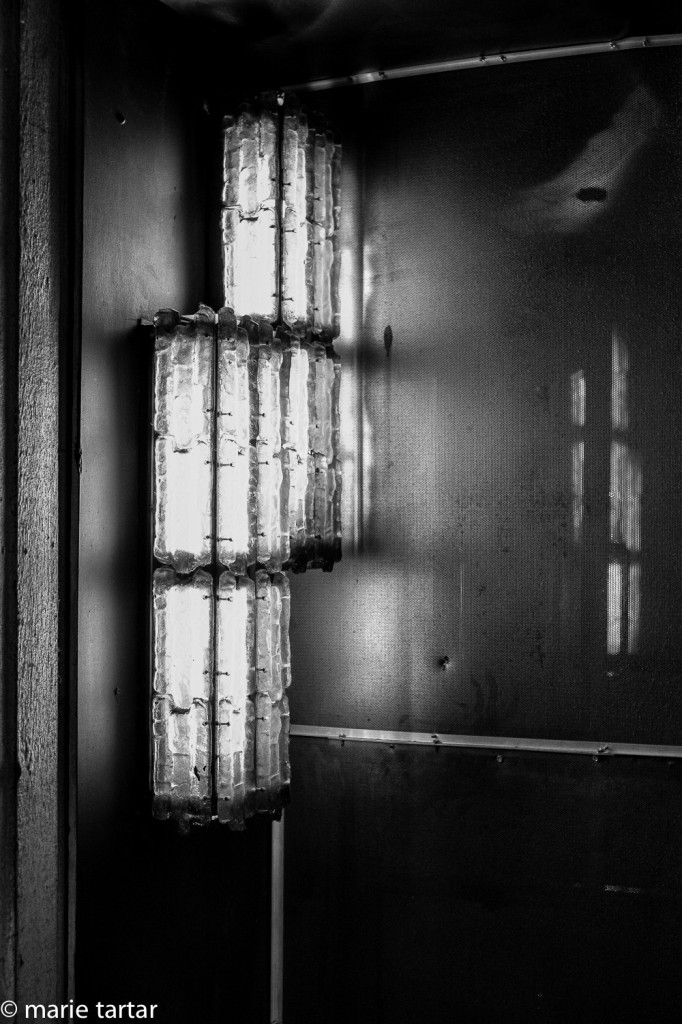
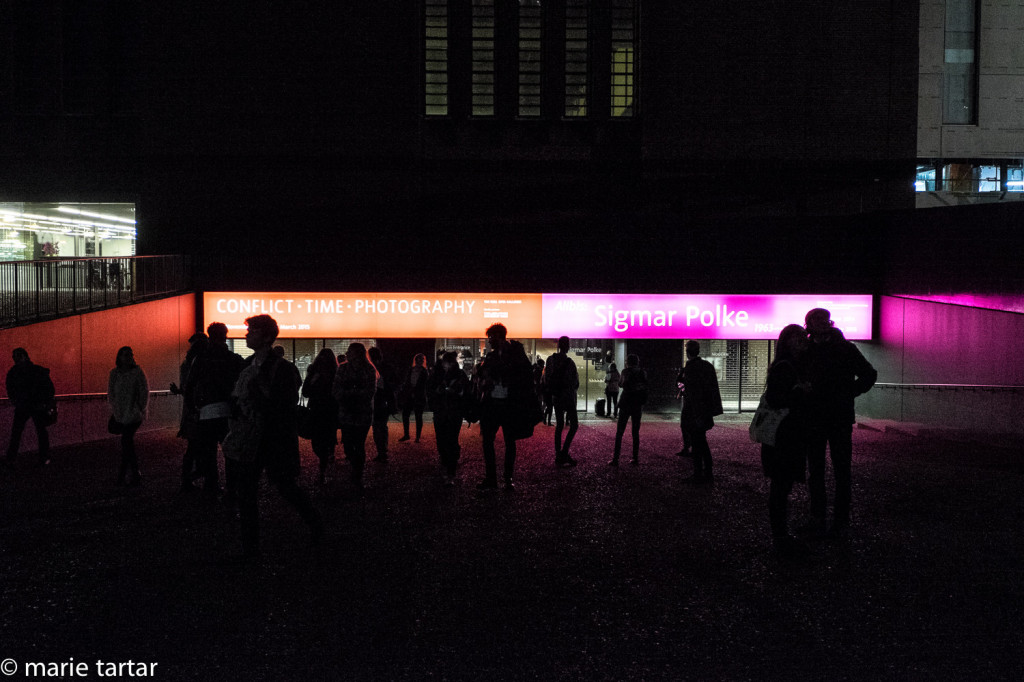

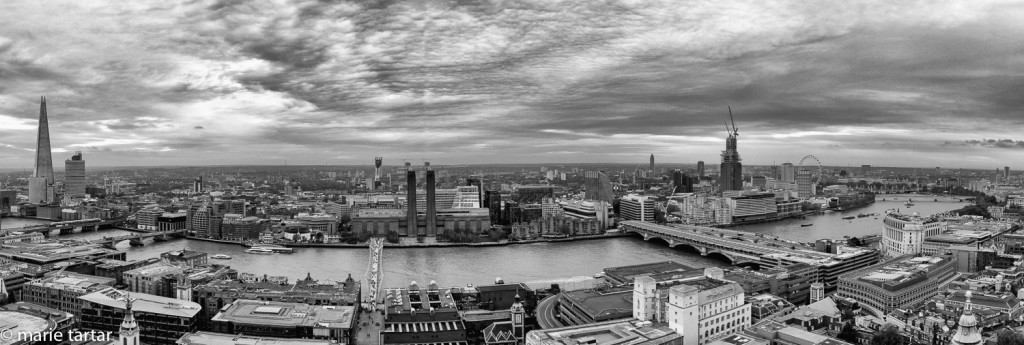
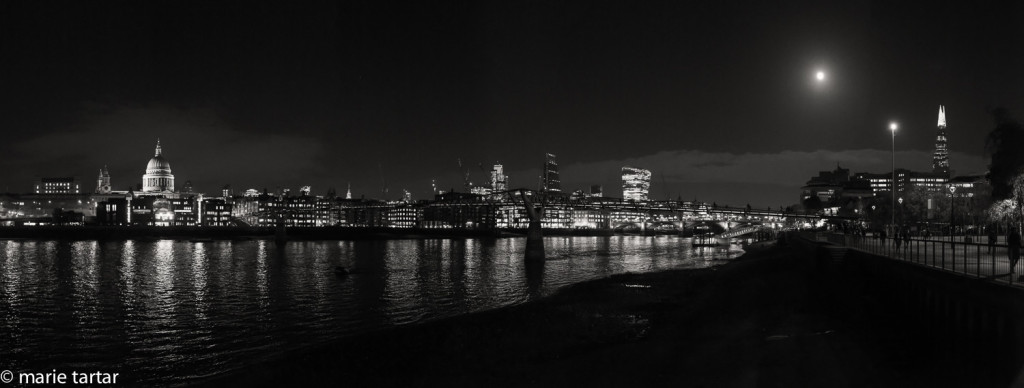
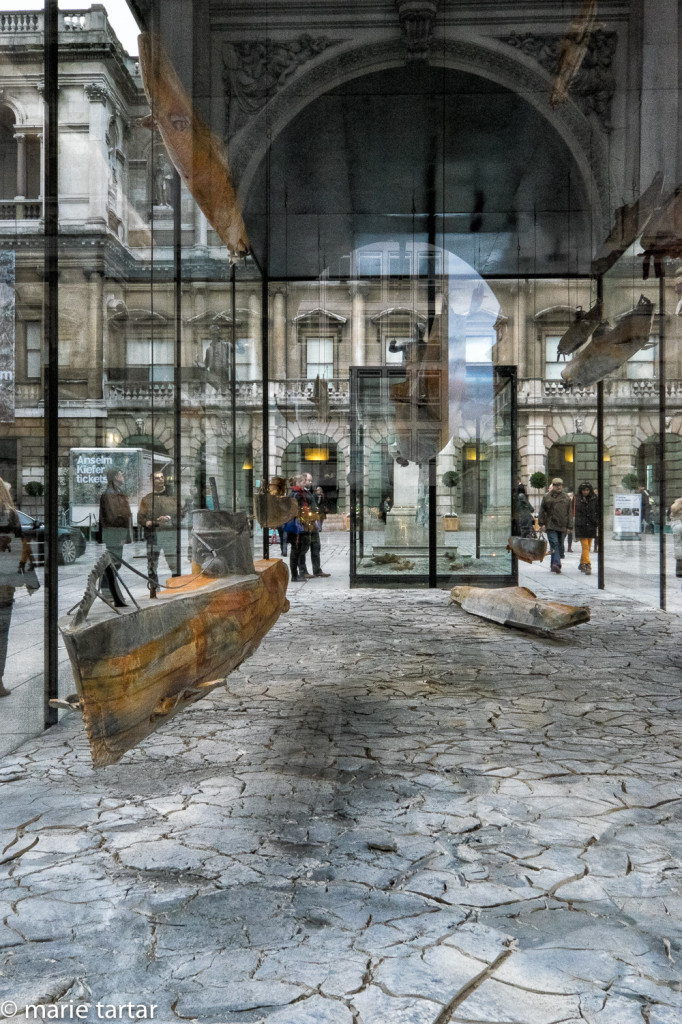
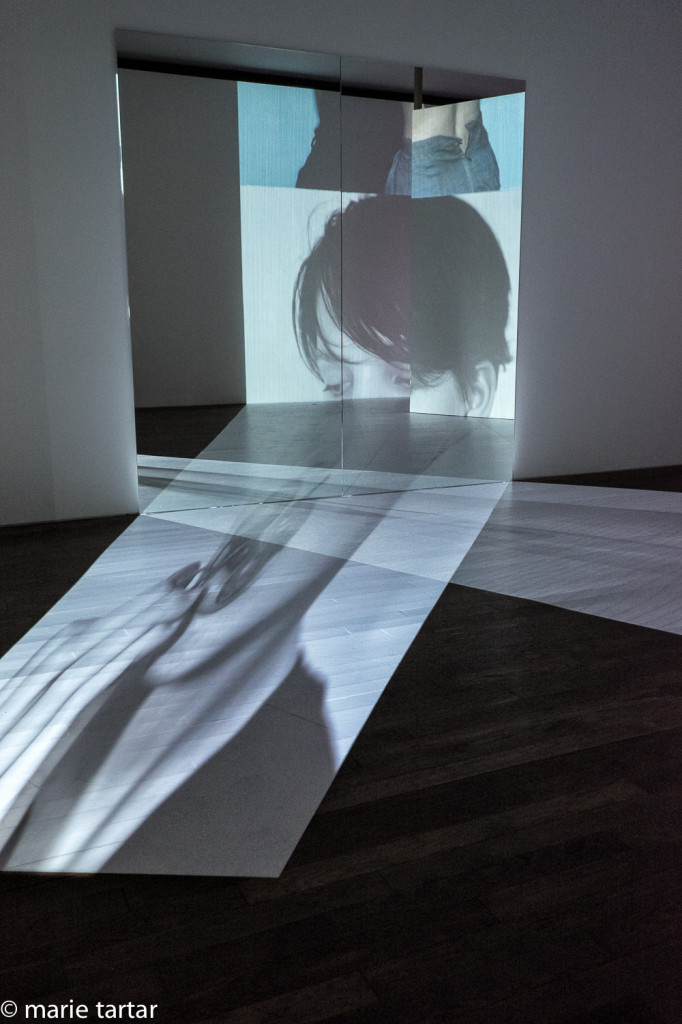
Toujours intéressant de vous lire.
Happy holidays and New Year! Que cette année 2015 soit remplie de joie et de bonheur et de belles photos! Best regards to Steve !
En souvenir de l’Islande 2014!
Lucie et Renaud xxxx